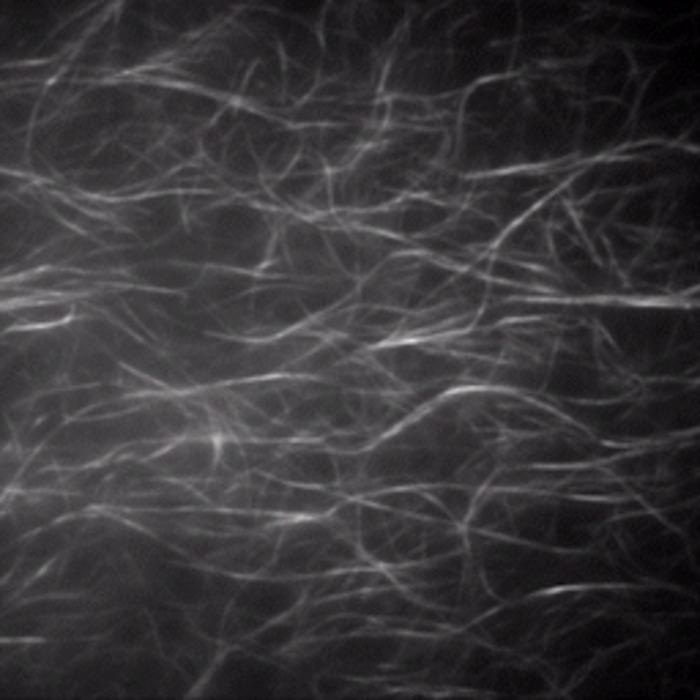A new study has revealed how synthetic self-made fibers can direct molecular movement that can be powered by light over long distances. It is a breakthrough that could set the stage for innovative ways to utilize light as a sustainable energy source.
 Molecular motion image. Image Credit: University of Nottingham.
Molecular motion image. Image Credit: University of Nottingham.
Researchers at the University of Nottingham, for the first-ever time, have utilized a path of assembled molecular liquids that traveling molecules could be propelled along by light. The study titled “Light-controlled micron-scale molecular motion” has been reported recently in the Nature Chemistry journal.
In living organisms, molecular motors travel along specific molecular paths, it is an essential part of cell function. We have shown that a synthetic self-made molecular fiber in a liquid behaves like a path for the movement of a molecular traveler over a distance 10,000 times its length. Light acts as the fuel to encourage the motion, while a molecular switch mixed into the system apparently propels the traveler on its way.
David Amabilino, Professor, School of Chemistry, University of Nottingham
“The system emulates, for the first time, movement of the kind taking place along fibers in cells. This is a very exciting discovery as If we can find ways to make use of the light’s potential in this process then it could pave the way for use in light activated medicines, new ways to harness light energy as a source of power and to create new sustainable ways to carry out chemical tasks,” added Amabilinio.
Interactions between oppositely charged chemical groups were utilized by the researchers to create motion to this static system by initiating a switching molecule. This molecule exhibits the potential to flap back and forth very rapidly, into the fibers.
When light is shone onto this, it tends to weaken the interaction of the traveler molecules with the path as they tend to move along it, which can be at a certain distance. If the molecule were the size of an individual, it could move the equivalent of 10 km.
Irradiation of the switching molecules leads to heat discharge, and that heat possesses a local effect that aids the traveler to move. Therefore, the mechanical movement of the switch and the heat emitted when it does are crucial for the functioning of the system.
The method used by the researchers to observe these effects is a unique optical microscope that enabled the concurrent excitation of the molecules. This helps them to move and observe them as they deliver light back out (the traveling molecules are fluorescent).
The system we have prepared is very sensitive to the solvent in which the fibers are formed. In a liquid about the strength of strong whisky, the traveling molecules move along the fibers to another location, whereas when the liquid is the strength of weaker limoncello, rings of rearranged fibers are formed where the travelers have moved along and incorporated into the newly formed circular track.
Mario Samperi, Study Co-Author, School of Pharmacy, University of Nottingham
“We want to be able to transport other molecules from one place to another in a controlled way, so that the traveling molecules can carry a package from one place to another, emulating nature, but using light as energy,” added Samperi.
Journal Reference:
Samperi, M., et al. (2021) Light-controlled micron-scale molecular motion. Nature Chemistry. doi.org/10.1038/s41557-021-00791-2.